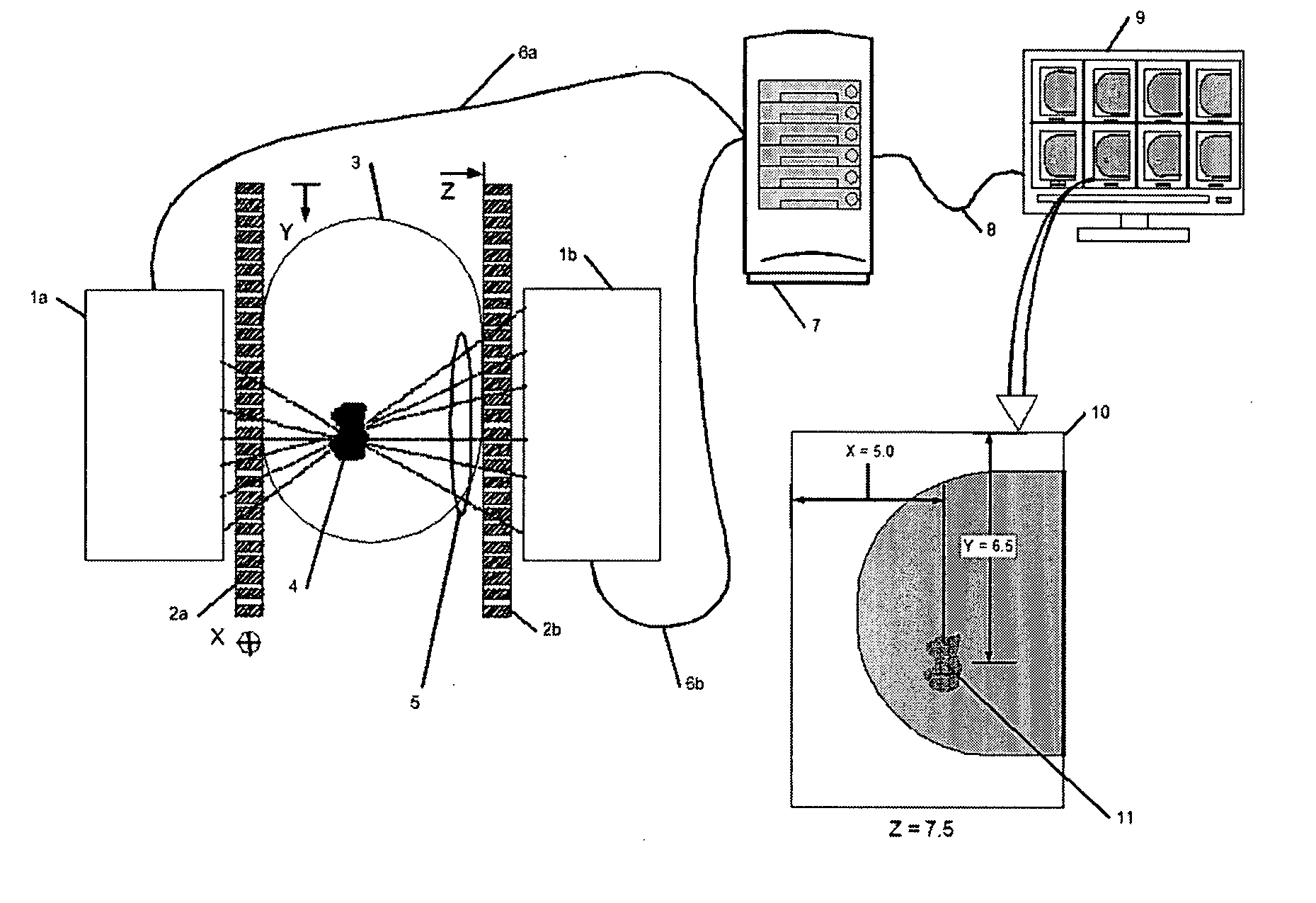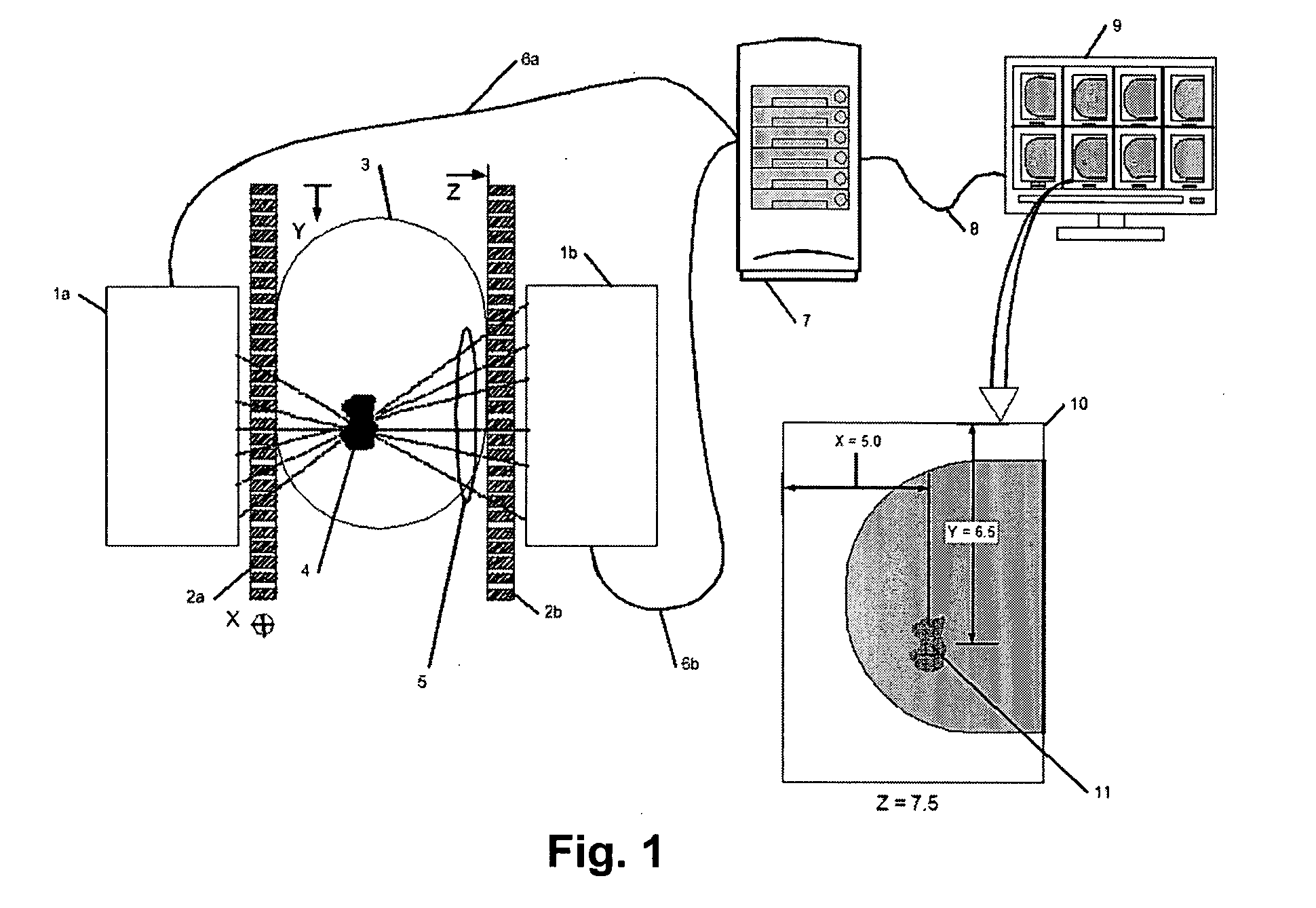Tissue interventions using nuclear-emission image guidance
a technology of nuclear emission imaging and tissue interventions, applied in the field of apparatus and a method for detecting and delineating cancerous lesions, can solve the problems of the inability to verify the location of the axis of the stylus in relation to the suspect tissu
- Summary
- Abstract
- Description
- Claims
- Application Information
AI Technical Summary
Benefits of technology
Problems solved by technology
Method used
Image
Examples
Embodiment Construction
[0058] A purpose of the present invention is to provide a method and apparatus to enable nuclear emission guided interventions using an imager that is able to detect emissions from tissue. Preferably, the imager is also capable of providing spatial coordinates or demonstrating spatial positioning of suspect tissue, including tissue that is or is not compressed and / or immobilized.
[0059] Accordingly, the present invention provides a method for enabling nuclear-emission-guided interventions. The method includes the steps of: using a nuclear emission tomograph, determining the spatial coordinates of suspect tissue; and then positioning a radioactive marker at a location and orientation relative to the suspect tissue such that an intervention can be performed. A new image is then produced that demonstrates the location and orientation of the radioactive marker with respect to previously and simultaneously identified suspect tissue, which is used to confirm that the position and orientat...
PUM
 Login to View More
Login to View More Abstract
Description
Claims
Application Information
 Login to View More
Login to View More - R&D
- Intellectual Property
- Life Sciences
- Materials
- Tech Scout
- Unparalleled Data Quality
- Higher Quality Content
- 60% Fewer Hallucinations
Browse by: Latest US Patents, China's latest patents, Technical Efficacy Thesaurus, Application Domain, Technology Topic, Popular Technical Reports.
© 2025 PatSnap. All rights reserved.Legal|Privacy policy|Modern Slavery Act Transparency Statement|Sitemap|About US| Contact US: help@patsnap.com



